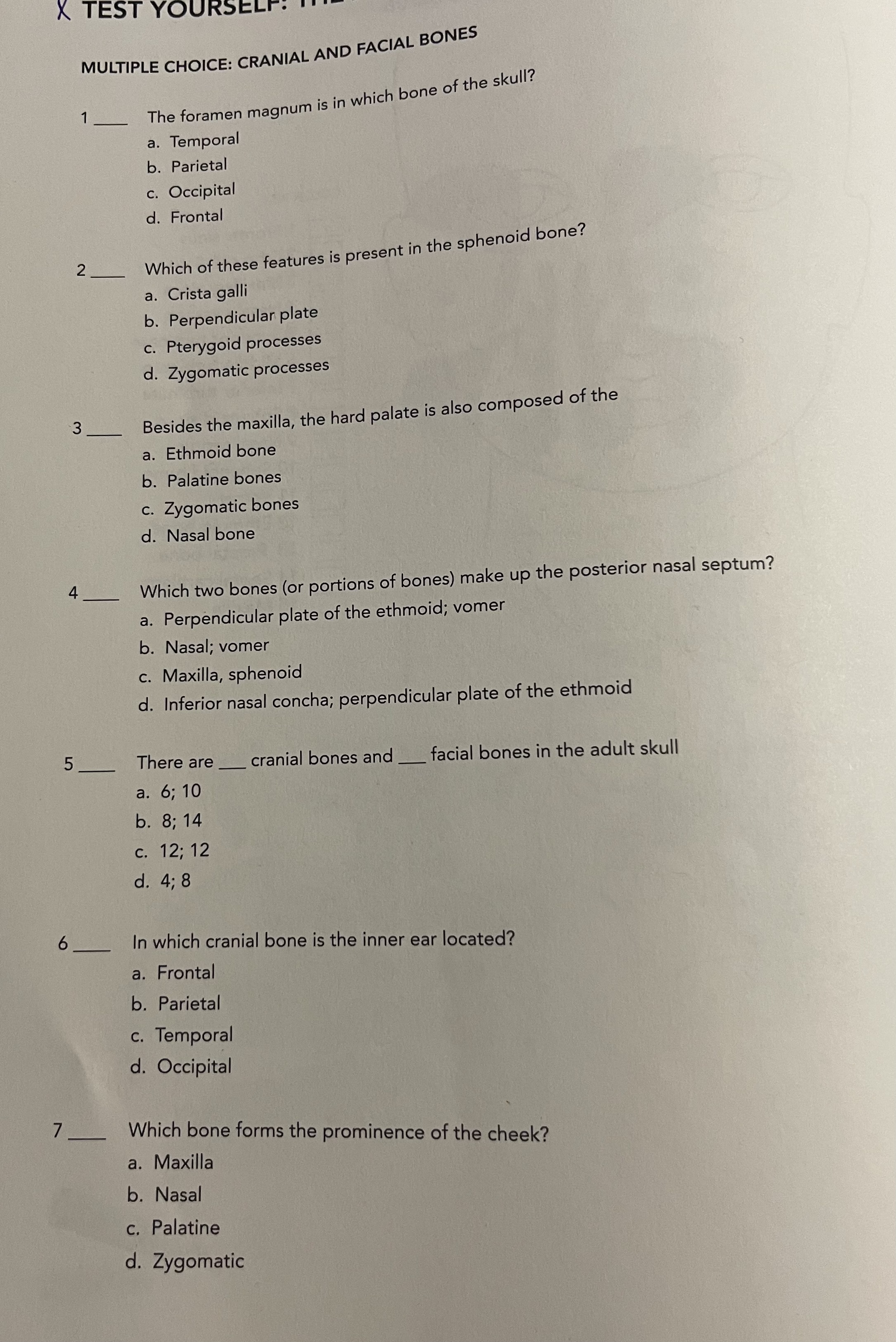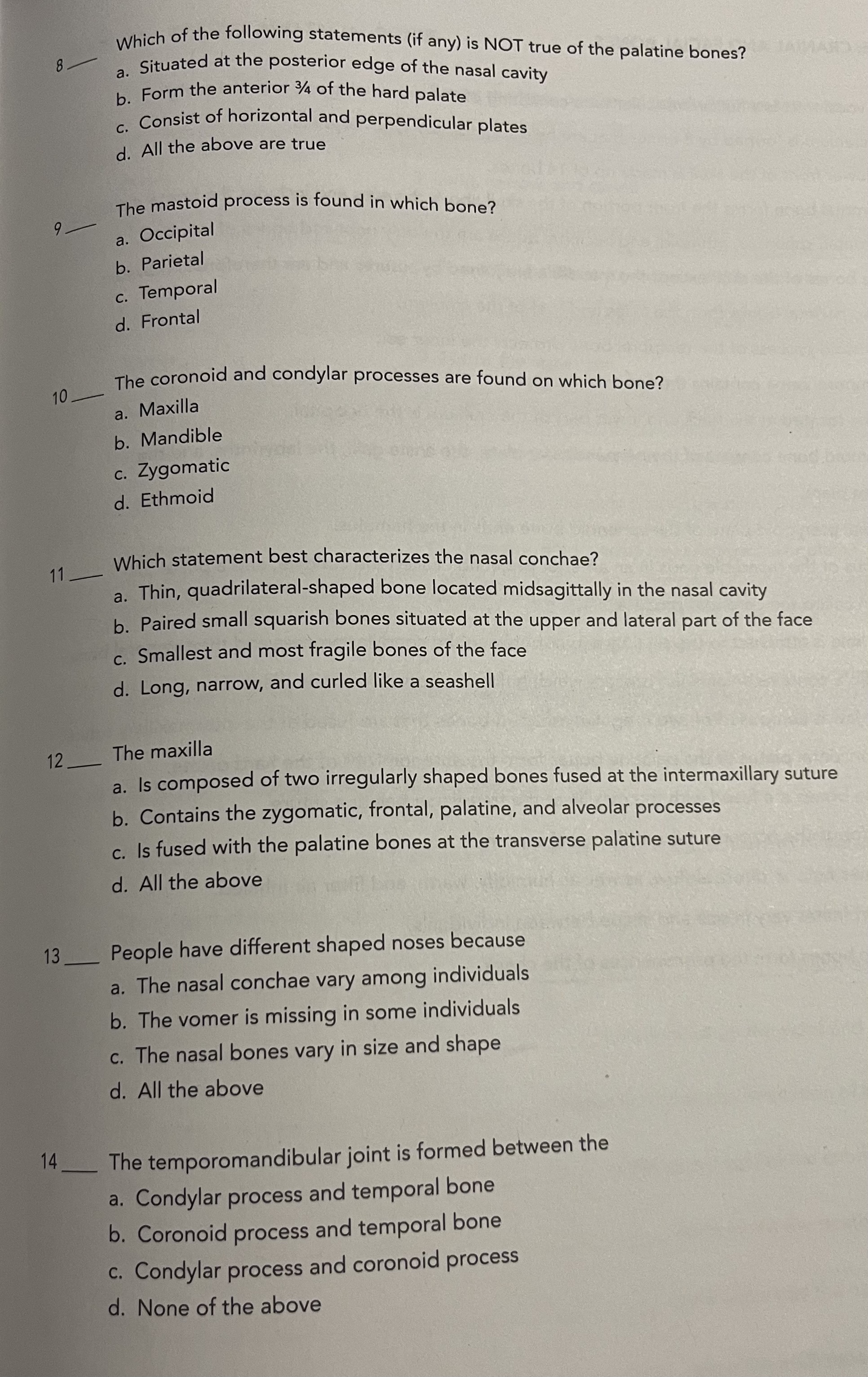Home /
Expert Answers /
Anatomy and Physiology /
1-the-foramen-magnum-is-in-which-bone-of-the-skull-a-temporal-b-parietal-c-occipital-d-frontal-pa647
(Solved): 1 The foramen magnum is in which bone of the skull? a. Temporal b. Parietal c. Occipital d. Frontal ...


1 The foramen magnum is in which bone of the skull? a. Temporal b. Parietal c. Occipital d. Frontal 2 Which of these features is present in the sphenoid bone? a. Crista galli b. Perpendicular plate c. Pterygoid processes d. Zygomatic processes 3 Besides the maxilla, the hard palate is also composed of the a. Ethmoid bone b. Palatine bones c. Zygomatic bones d. Nasal bone 4 Which two bones (or portions of bones) make up the posterior nasal septum? a. Perpendicular plate of the ethmoid; vomer b. Nasal; vomer c. Maxilla, sphenoid d. Inferior nasal concha; perpendicular plate of the ethmoid 5 There are cranial bones and facial bones in the adult skull a. b. c. d. 6 In which cranial bone is the inner ear located? a. Frontal b. Parietal c. Temporal d. Occipital 7 Which bone forms the prominence of the cheek? a. Maxilla b. Nasal c. Palatine d. Zygomatic
Which of the following statements (if any) is NOT true of the palatine bones? 8 a. Situated at the posterior edge of the nasal cavity b. Form the anterior of the hard palate c. Consist of horizontal and perpendicular plates d. All the above are true The mastoid process is found in which bone? a. Occipital b. Parietal c. Temporal d. Frontal 10 The coronoid and condylar processes are found on which bone? a. Maxilla b. Mandible c. Zygomatic d. Ethmoid 11 Which statement best characterizes the nasal conchae? a. Thin, quadrilateral-shaped bone located midsagittally in the nasal cavity b. Paired small squarish bones situated at the upper and lateral part of the face c. Smallest and most fragile bones of the face d. Long, narrow, and curled like a seashell 12 The maxilla a. Is composed of two irregularly shaped bones fused at the intermaxillary suture b. Contains the zygomatic, frontal, palatine, and alveolar processes c. Is fused with the palatine bones at the transverse palatine suture d. All the above 13 People have different shaped noses because a. The nasal conchae vary among individuals b. The vomer is missing in some individuals c. The nasal bones vary in size and shape d. All the above 14 The temporomandibular joint is formed between the a. Condylar process and temporal bone b. Coronoid process and temporal bone c. Condylar process and coronoid process d. None of the above